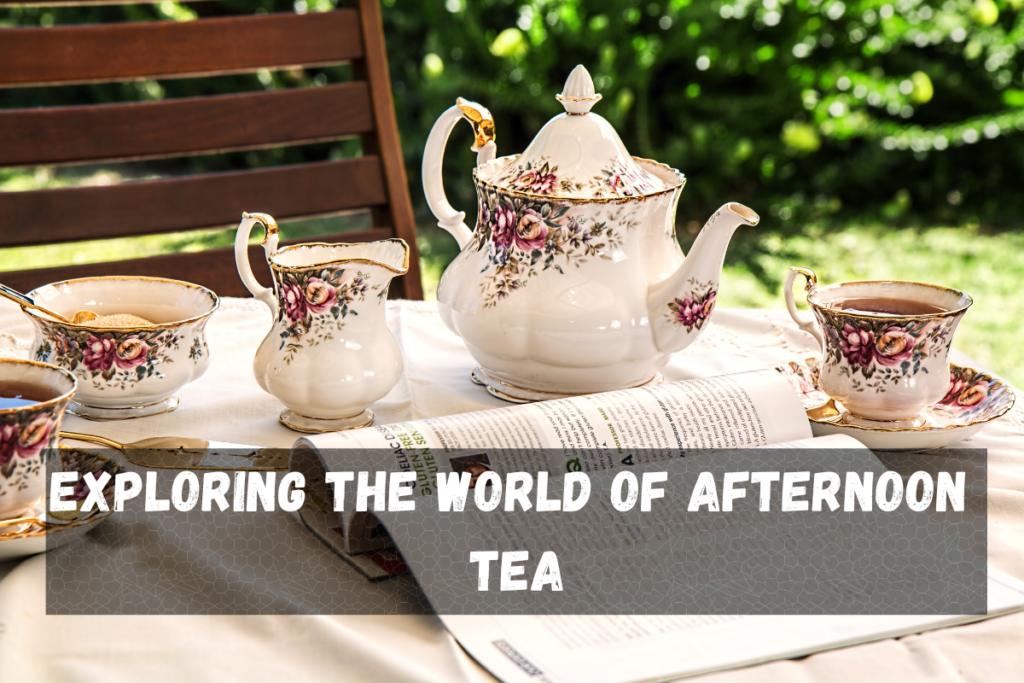“Afternoon tea” is a timeless custom rooted in culture and delicious food that evokes feelings of elegance and refinement. This beloved tradition originated in Britain during the early 19th century, but it has transcended borders and captured hearts and palates worldwide. It’s more than just drinking tea; it’s an immersive event, it’s a way to experience history, tradition, and social customs. It’s a moment to pause, reflect, and enjoy the simple pleasures of life.
As we explore the fascinating world of afternoon tea, come along on a journey with me. We’ll learn the origins of afternoon tea, how it developed into a worldwide phenomenon, and the numerous customizations that make each experience special. Now let’s raise our glasses and begin this enjoyable journey together.
What is afternoon tea?
Afternoon tea is a tradition originating in England in the 1840s. It was originally created as a mini meal to curb hunger and to fill in the long gap between lunch and dinner at a time when dinner was served as late as 8 p.m.
Usually served on fine china, a typical afternoon tea features a three-tiered stand of treats- cakes, sweet pastries, scones with jam and clotted cream, and sandwiches that are sliced carefully into fingers- and a pot of tea at the center. It’s interesting to note that scones were included in afternoon tea later in the 20th century.
Historical background
Tea has not always been the essential beverage it is today. In the 17th century, tea was a precious commodity for the wealthy, and drinking it was a privilege reserved for royalty. And it was there that the ‘afternoon tea’ custom began to take shape.
The Duchess Who Popularized Afternoon Tea
The early nineteenth century saw a sharp rise in tea drinking, and it was during this period that Anna Maria Russell, the seventh Duchess of Bedford, one of Queen Victoria’s ladies-in-waiting complained about “having that sinking feeling” in the late afternoon. So she started ordering a small meal in the afternoon consisting of a cup of tea with milk and sugar, dainty sandwiches, and cakes. Later she started inviting her friends to join her and eventually, it became a social event.
Queen Victoria was among Anne’s closest friends, and soon this summer practice became so popular for high-class society women that they would change into long gowns, hats, and gloves to be served in the drawing room between four and five o’clock.
During afternoon tea, wealthy households would serve their best bone china and silver in addition to exotic teas imported from China, India, or Sri Lanka. The availability of refined cakes, buttery pastries, and sugar, which was also an import, were signs of the host’s prosperity. Servants would attend to the guests’ needs during these meals, with the hostess overseeing everything.
In the 1880s, Queen Victoria adopted the ritual, making it a formal occasion of large-scale commonly called “Tea Receptions”. Hundreds of guests were invited to be part of “Tea Receptions” at the Queen’s palace. By this time afternoon tea had reached its present state and was enjoyed by middle-class and upper-class individuals alike. Even in the remote village, it spread widely.
Afternoon Tea Today
It traditionally included delicate sandwiches (typically cucumber or egg and cress sandwiches), delicately sliced bread and butter, and cakes and pastries (like Victoria sponge or Battenberg cake).
In modern England, afternoon tea has become as popular as weekend brunch in the United States. However, today’s greatest afternoon teas are offered in public spaces rather than in homes.
The most traditional repasts are served at upscale hotels and prestigious department stores, such as Claridge’s and Fortnum & Mason in London, which have strong ties to the country’s tea culture and trade. Their tea menus are compact hardcover volumes with an extensive selection of loose-leaf black, green, white, and herbal teas, drawing in diners’ attention.
Meanwhile, modern eateries and young chefs continue to honor the tradition of afternoon tea while reinventing the norms. In London’s food-loving Clerkenwell district, the Modern Pantry serves afternoon tea with mismatched antique crockery and inventive twists on classic dishes like chia-seed bread, lychee bellinis, and rosewater-infused scones.



